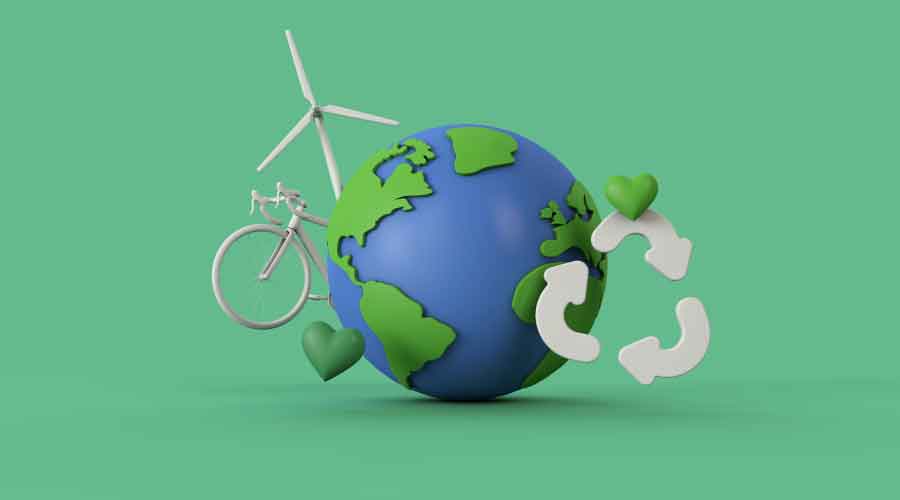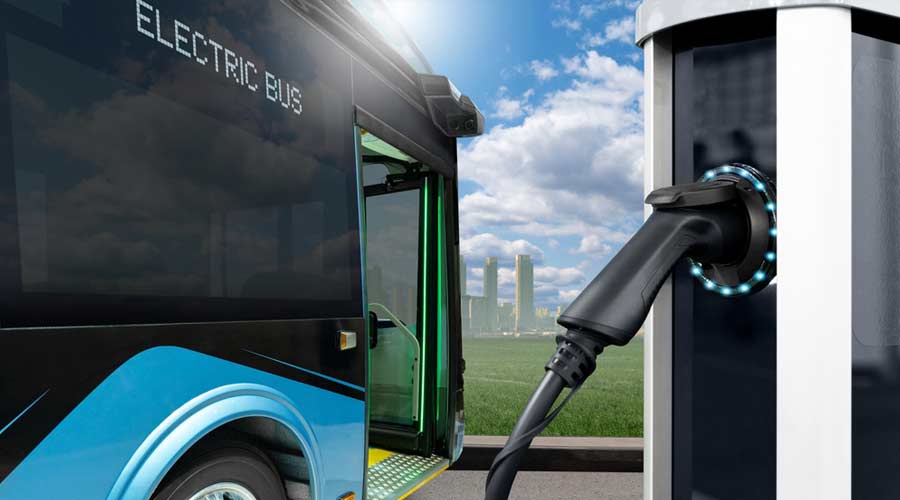How LEED Tackles Climate Change
Third-party certification systems like LEED and LEED Zero are crucial to stemming the tide of climate change. Here’s why.
By Deisy Verdinez, contributing writer
It’s been a challenging summer. Most of the country has experienced hotter than average temperatures. Energy costs are climbing. Drought conditions have led to water restrictions in parts of the country. All of these challenges impact how we operate our buildings and spaces.
Buildings are resource-intensive spaces that consume one-third of all energy and are responsible for about 40 percent of all carbon emissions. As building owners, using smart strategies and tools can help existing buildings become more energy-efficient and reduce their environmental impacts. This not only benefits the bottom line but also has a positive effect on building occupants and the communities buildings serve.
The mission to transform how buildings are designed, constructed and operated is more critical than ever. This mission has become increasingly important as we face weather events like those we’ve experienced this summer, especially for existing buildings. Consider that it can take up to 80 years to make up for the impacts of demolishing an existing building and constructing a new one, even if the resulting building is highly energy efficient. However, many older buildings worldwide are inefficient and resource-depleting, but with keen attention to building operations that can be turned around by using LEED for Operations and Maintenance.
Third-party certifications like LEED offer projects the tools and strategies to create more sustainable and healthy buildings. By focusing on both performance-oriented sustainable approaches and outcomes, LEED helps build high-performing buildings.
Energy efficiency
Nationally, energy costs have increased by 8 percent, with no signs of easing anytime soon. Energy needs will only increase in the future, as populations grow and become more urban, making it critical that we make our spaces more energy efficient. Managing energy usage responsibly and shifting away from a dependence on oil and coal power to renewable energy sources like solar and wind will determine many aspects of our future.
Green buildings have always been part of the fight to slow climate change, and third-party verification systems provide a framework for project teams to reduce carbon emissions. With LEED, the Energy and Atmosphere (EA) category of the rating system prioritizes energy use reduction, energy-efficient design strategies and renewable energy sources. Everything from climate-appropriate building materials to passive heating and cooling plays a part in lowering the carbon footprint of a home, school or office.
USGBC’s LEED v4.1 has gone even further, including both greenhouse gas emissions and cost in its energy performance metrics, and developing a new credit for renewable energy that better addresses diverse methods of renewable energy procurement and evolving global markets.
The benefits of building and operating green speak for themselves: Studies have demonstrated that LEED-certified buildings have saved an estimated $1.2 billion in energy savings. Even the federal government sees the benefit of green buildings and has documented that its high-performing buildings save 23 percent in energy use and 23 percent in building operating expenses.
Water usage in existing buildings
According to the United Nations, water scarcity affects more than 40 percent of the global population, and the Environmental Protection Agency estimates that 40 U.S. states will have water shortages by 2024. Access to clean water is necessary for human beings to maintain their health and food supply, but pollution, drought and waste challenge resources worldwide — in ways that will only increase.
Many parts of the country are experiencing some level of drought conditions. In fact, states like California, Arizona, and Texas have imposed water restrictions due to insufficient rainfall. This means that commercial buildings have an obligation to reduce their water usage.
Commercial buildings account for approximately 9 percent of the total water use in the United States with restrooms, heating and cooling and landscaping as the three most significant water usage. Green buildings encourage water use reduction, rainwater management and the employment of alternative, non-potable water sources for appropriate end uses.
Net zero
Recent years have seen more organizations, cities and localities push to reduce carbon emissions and accelerate efforts to achieve a low-carbon future. Cities such as Ithaca, New York, and Boston, have implemented buildings standards that work toward net zero carbon emissions for buildings. In response, some building operators are pursuing more ambitious net zero goals for their buildings. According to a 2020 UN report, buildings must reduce at least 50 percent of their carbon by 2030 to achieve net zero by 2050.
The LEED Zero program is one way to help building owners and operators achieve those goals. A complement to LEED certification, LEED Zero provides a clear, data-driven path to recognizing net zero goals and signals market leadership in the built environment.
LEED Zero energy certification is awarded to net zero energy buildings and communities that generate as much energy as they use over the course of the year. LEED Zero Carbon recognizes net zero emissions from energy consumption through carbon emissions avoided or offset over one year.
Health and wellness
There are other benefits to using third-party green building certification. Because rating systems like LEED are holistic, they also take into account occupant health and wellness. More people are returning to the office, and these days more workers are conscious of the air they breathe. The pandemic has spotlighted indoor air quality and ventilation, and people want to work and visit spaces that prioritize the health of its occupants and visitors. Managing indoor air quality is an integral part of operating a green building. For example, existing buildings pursuing certification under LEED v4.1 must meet the Minimum Indoor Air Quality requirement, intended to benefit occupants and establish minimum standards for indoor air quality.
Improving building performance will be critical as the country experiences more challenging summers like the one just experienced. Everyone must use all the tools available to adapt to these conditions for the sake of occupants and their communities.
Deisy Verdinez is the communications director for the U.S. Green Building Council.
Related Topics:












